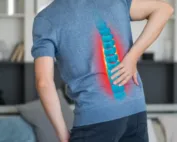Introduction:
Effective workouts go beyond mere fitness; they’re tailored to specific goals like weight loss or muscle gain. Let’s delve into the strategies for each, exploring the best exercises and approaches to maximize your fitness journey.
Key Takeaway:
- Define specific fitness goals for your workout regimen.
- Tailor exercises to target either weight loss or muscle gain.
- Cardiovascular workouts are optimal for weight loss.
- Strength training with weights is ideal for muscle gain.
What are the best workouts for weight loss or muscle gain?
Cardiovascular exercises like cycling and aerobic dance are effective for weight loss, while strength training with weights targets muscle gain. Tailoring your workout routine to your goals is essential for optimal results.
Working out is a key protocol to include in any wellness program, since exercise can help you in so many ways. However, it’s often easier to find enjoyment and stick to a workout regimen if you set yourself a goal other than simply to “get fit”. Many people, who work out, do so with weight loss as an objective. Others perform regular workouts to gain muscle. Either way, the process of working out is good for your general health and wellness. Therefore you can be confident that as you lose weight or gain muscle, your general fitness will be improving too.
Defining your objectives for working out though, will also determine the forms of workout that you practice. Some types of exercise are good for weight loss and others are more suitable for gaining muscle. There are even some forms of exercise, such as Pilates, which help you build strength and balance without necessarily losing weight or gaining muscle. However in this article, I’d like to focus on workouts for weight loss or muscle gain.
Working out for Weight Loss
If you want to build muscle, your workouts will be focused on strength training. The problem with strength training though, is that unless you work out at the level of a serious weight lifter, it just doesn’t burn sufficient calories to help with weight loss. If you are planning to work out for weight loss, aerobic exercise is the way to go.
In order to lose weight, you need to generate what’s known as a “calorie deficit” meaning that you need to burn off more calories than you take in. Cardiovascular workouts are more effective at burning calories than the types of exercise you would do to build muscle. To illustrate the effectiveness of aerobic exercise, here are a few example of how many calories you can burn with an hour of exercise, assuming you weigh 150 pounds:
- One hour of cycling at 18 MPH – 850 calories
- One hour of karate or taekwondo – 720 calories
- One hour of aerobic dance – 684 calories
- One hour of inline skating – 600 calories
- One hour of freestyle swimming at 50 yards per minute – 523 calories
- One hour on a ski machine – 564 calories
- One hour of basketball – 564 calories
As you might notice from the examples above, the beauty of aerobic exercise for weight loss is that there are so many different ways in which you can work out. Even one hour of vigorous walking will burn around 300 calories, so if you just like to take a walk, you can lose weight by doing so. Of course you need to pursue a regular routine for your chosen method of workout, as you need to create a 3,500 calorie deficit to lose one pound in a week. Also, as your weight drops, you will burn slightly fewer calories in an hour of your favorite exercise, so you’ll need to work out for a little longer or a little more vigorously.
If you are working out as part of a plan to manage lower back pain or other spinal problems, it’s best to try and avoid cardiovascular activities that involve impact. Swimming and cycling are ideal ways to work out for pain management and to manage your weight while recovering from a joint or muscle injury.
Working Out for Muscle Gain
If your objective is to gain muscle, then a completely different principle applies to that for weight loss. For one thing, you will need to utilize exercises which target specific muscle groups. For another, the process is more concerned with progressively overloading muscles than burning calories. A lot of people concerned with muscle gain prefer to work out with weights, as it’s an ideal way to target different groups of muscles.
The muscles in your body only gain strength and mass if there is a good reason to do so. That’s why your weight training workouts need to place more strain on your muscles than they are used to handling. Overloading your muscles stimulates a process known as hypertrophy. This is merely the technical term for muscle growth.
Working out for muscle gain requires a slightly more technical approach than targeting weight loss. You need to decide on which muscles you wish to target. Then you must create a program involving exercise of the appropriate frequency, duration and intensity to adapt your muscles as you wish. There is also quite a lot of complexity involved with planning workout frequency, as well as how long you should rest specific muscle groups between workout periods. It’s for these reasons that working with a trainer can make for more effective muscle gain workouts.
Working Out for Wellness
Whether you work out with the objective of losing weight or gaining muscle, remember to warm up before you work out. The last thing you want is to curtail your fitness efforts through an injury to unprepared muscles. Lastly, try to choose a workout activity that you will enjoy – That way, as well as losing weight or gaining muscle, you will gain an extra interest in your life and continuously improve your overall health and wellness.
Recent Blogs
Why Physical Therapy Should Be Your Secret Weapon Before Surgery
Surgery, while sometimes necessary, can be a daunting prospect. The recovery process is often lengthy and filled with unknowns. But what if there was a way to optimize your body's readiness for surgery and [...]
Spinal Decompression Therapy: A Non-Surgical Option for Herniated Discs
The discs in your spine act as cushions between the vertebrae, providing flexibility and absorbing shock. When the outer wall of a disc weakens or tears, the soft inner core can bulge or push [...]
PRP for Knees_ A Promising Option for Pain Relief and Mobility – word
For many people, knee pain is a constant companion, limiting mobility and impacting quality of life. Traditional treatments like pain medication and physical therapy can offer relief, but they may not address the underlying [...]




